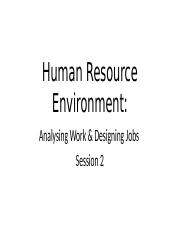Work plays a central role in our lives, providing us with a sense of purpose, structure, and financial stability. However, not all jobs are created equal, and it is important to carefully analyze and design work in order to create meaningful and fulfilling employment opportunities for individuals.
One way to analyze work is to examine the tasks and responsibilities involved in a particular job. This involves breaking down the work into smaller components and evaluating each one separately. For example, a customer service representative might be responsible for answering customer inquiries, resolving complaints, and processing orders. By analyzing these tasks, we can determine whether they are necessary, whether they align with the skills and interests of the individual performing the job, and whether they contribute to the overall goals of the organization.
Another way to analyze work is to consider the work environment and the conditions in which the job is performed. This includes factors such as the physical layout of the workspace, the tools and equipment used, and the social dynamics of the team. A positive work environment can foster productivity, creativity, and job satisfaction, while a negative work environment can lead to burnout, turnover, and decreased performance.
Designing jobs involves creating roles that align with the needs and goals of both the organization and the individual. This can involve identifying new job roles or modifying existing ones to better meet the needs of the organization and its stakeholders. For example, a company might design a new role for a social media manager to increase its online presence and engage with customers, or it might modify the responsibilities of a sales representative to include more emphasis on building relationships with key clients.
Effective job design also involves considering factors such as job autonomy, skill variety, task identity, task significance, and feedback. Jobs that offer a high degree of autonomy, skill variety, and task identity tend to be more fulfilling and engaging, while jobs that lack these elements can be monotonous and dissatisfying. Providing regular feedback and opportunities for growth and development can also contribute to job satisfaction and performance.
In conclusion, analyzing work and designing jobs are important tasks that can help create meaningful and fulfilling employment opportunities. By carefully examining the tasks, responsibilities, and work environment of a particular job, and designing roles that align with the needs and goals of the organization and individual, we can create work that is both productive and satisfying.







